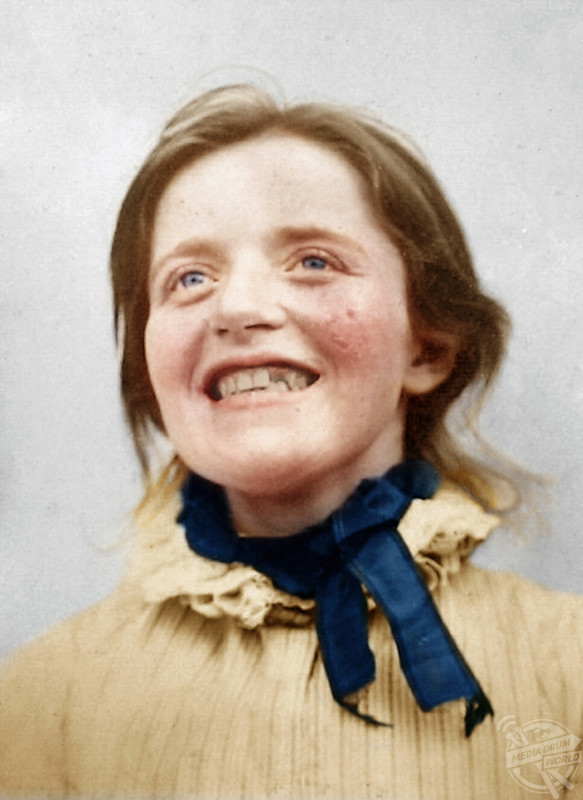By Mark McConville
THE HAUNTING portraits of Victorian asylum patients have been brought back to life after being expertly colourised following World Mental Health Day.

breakdown?
Nicola Branson / mediadrumimages.com
The striking pictures show Frances Mary Antoinette Spackman whose husband Henry had her declared insane in 1901 and sent her to a private asylum near Bristol.

him to believe he was cursed.
Nicola Branson / mediadrumimages.com
Other haunting photographs show a woman with a vacant expression, open mouth, dribbling saliva, and fixed attitude, John Constantin who was deaf mute and admitted aged just 10 before spending 55 years in containment and care and John Phillips of Gower, whose facial growth led him to believe he was cursed.

Nicola Branson / mediadrumimages.com
The original black and white images were painstakingly colourised by housewife Nicola Branson (47), from Wellingborough, UK.

Nicola Branson / mediadrumimages.com
“I chose these images originally after reading up about the history of how people were treated during the Victorian times,” she said.

Nicola Branson / mediadrumimages.com
“How people were quick to condemn people to the lunatic asylums not just for mental health issues, but for minor offences to husbands wanting to get rid of their wives.

Nicola Branson / mediadrumimages.com
“The photos I was seeing through researching, suggested that some were ordinary people with ordinary lives, look deeply into their eyes and they portray their individual story without the need for words.

Nicola Branson / mediadrumimages.com
“One of the men stares blankly, a lost soul forever forgotten in history. Yet here he is in an old photo being remembered for his troubled life that put him in an asylum. Some lunatic asylums had very harsh ways of dealing with patients, I think colour adds to the realities of what these people went through.

Nicola Branson / mediadrumimages.com
“Thankfully lunatic asylums of the Victorian era no longer exist, however history does remain of the people who were committed to these places. Thankfully in today’s society there is a lot more help and understanding of the different conditions that exist.”

Nicola Branson / mediadrumimages.com
Although institutionalisation of patients with mental health problems may not have been invented in the Victorian Era, there was a huge rise in the numbers of asylums and their patients.

Nicola Branson / mediadrumimages.com
The first known asylum in the UK was at Bethlem Royal Hospital in London. It had been a hospital since 1247 but began to admit patients with mental health conditions around 1407.

Nicola Branson / mediadrumimages.com
Patients were often considered as ‘mad’ as suggested by The Mad House Act of 1774. This was superseded in 1853 by The Lunatic Asylums Act.

Nicola Branson / mediadrumimages.com
Treatments included restraints and the padded cell, water therapy and drug treatments.

Nicola Branson / mediadrumimages.com
The old asylum system in the UK had become too big to manage by the 1960s and it was announced in 1961 that many would close.

Nicola Branson / mediadrumimages.com










